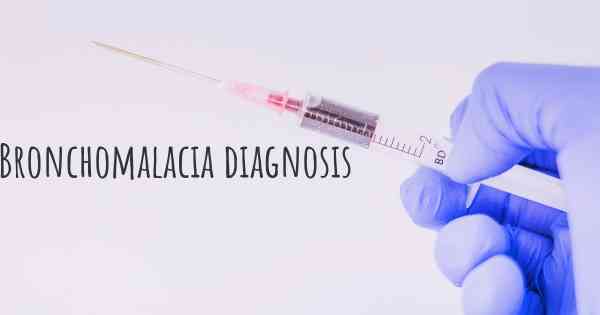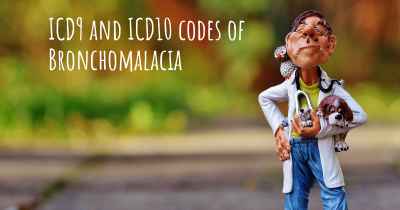How is Bronchomalacia diagnosed?
See how Bronchomalacia is diagnosed. Which specialists are essential to meet, what tests are needed and other useful information for the diagnosis of Bronchomalacia

Diagnosing Bronchomalacia
Bronchomalacia is a condition characterized by the weakening and collapse of the walls of the bronchial tubes, which are the airways that carry air in and out of the lungs. It can lead to symptoms such as wheezing, shortness of breath, and recurrent respiratory infections. Diagnosing bronchomalacia involves a combination of medical history evaluation, physical examination, and various diagnostic tests.
Medical History Evaluation
During the medical history evaluation, the healthcare provider will ask the patient about their symptoms, their duration, and any factors that worsen or alleviate them. They will also inquire about the patient's medical history, including any previous lung or respiratory conditions, surgeries, or relevant family history. This information helps the healthcare provider to assess the likelihood of bronchomalacia and guide further diagnostic steps.
Physical Examination
A thorough physical examination is crucial in diagnosing bronchomalacia. The healthcare provider will listen to the patient's lungs using a stethoscope to detect any abnormal breath sounds, such as wheezing or crackles. They may also assess the patient's breathing pattern, look for signs of respiratory distress, and evaluate the overall lung function. Physical examination findings, combined with the medical history, can provide important clues to the presence of bronchomalacia.
Diagnostic Tests
Several diagnostic tests are available to confirm the diagnosis of bronchomalacia and assess its severity. These tests may include:
1. Pulmonary Function Tests (PFTs)
PFTs are a series of breathing tests that measure lung capacity, airflow, and how well the lungs deliver oxygen to the blood. These tests can help identify any abnormalities in lung function, such as decreased airflow or increased airway resistance, which may indicate bronchomalacia.
2. Bronchoscopy
Bronchoscopy is a procedure that allows direct visualization of the airways using a thin, flexible tube with a camera called a bronchoscope. It can help identify any structural abnormalities or collapse in the bronchial walls. During the procedure, the healthcare provider may also perform bronchial provocation tests, where certain substances are introduced to assess the airway's response.
3. Imaging Studies
Various imaging studies can provide detailed images of the lungs and airways, aiding in the diagnosis of bronchomalacia. These may include:
- Chest X-ray: Although it may not directly diagnose bronchomalacia, it can help rule out other conditions and assess the overall lung structure.
- CT scan: A CT scan provides cross-sectional images of the lungs, allowing for a more detailed evaluation of the airways and potential bronchomalacia-related abnormalities.
- Magnetic Resonance Imaging (MRI): MRI uses powerful magnets and radio waves to create detailed images of the lungs and airways, providing valuable information about their structure and function.
- Fluoroscopy: Fluoroscopy involves real-time X-ray imaging, which can help visualize the movement and function of the airways during breathing.
4. Sleep Studies
In some cases, bronchomalacia symptoms may worsen during sleep. Sleep studies, such as polysomnography, can monitor various parameters during sleep, including oxygen levels, breathing patterns, and the presence of any sleep-related breathing disorders. These studies can help identify any nocturnal worsening of bronchomalacia and guide appropriate treatment strategies.
5. Other Tests
Additional tests may be performed based on the individual patient's symptoms and suspected underlying causes. These may include sputum cultures, blood tests, or allergy testing to rule out other respiratory conditions or identify potential triggers.
It is important to note that diagnosing bronchomalacia requires the expertise of healthcare professionals, such as pulmonologists or respiratory specialists. They will interpret the results of the diagnostic tests in the context of the patient's symptoms and medical history to make an accurate diagnosis and develop an appropriate treatment plan.








